Preface
Who is this book for?
Why this book?
What is this book about?
Prerequisites
A word on exercises
Related reading
Acknowledgements
Appetizer: using probability to cover a geometric set
Preliminaries on random variables
Basic quantities associated with random variables
Some classical inequalities
Limit theorems
Notes
Concentration of sums of independent random variables
Why concentration inequalities?
Hoeffding's inequality
Chernoff's inequality
Application: degrees of random graphs
Sub-gaussian distributions
General Hoeffding's and Khintchine's inequalities
Sub-exponential distributions
Bernstein's inequality
Notes
Random vectors in high dimensions
Concentration of the norm
Covariance matrices and principal component analysis
Examples of high-dimensional distributions
Sub-gaussian distributions in higher dimensions
Application: Grothendieck's inequality and semidefinite programming
Application: Maximum cut for graphs
Kernel trick, and tightening of Grothendieck's inequality
Notes
Random matrices
Preliminaries on matrices
Nets, covering numbers and packing numbers
Application: error correcting codes
Upper bounds on random sub-gaussian matrices
Application: community detection in networks
Two-sided bounds on sub-gaussian matrices
Application: covariance estimation and clustering
Notes
Concentration without independence
Concentration of Lipschitz functions on the sphere
Concentration on other metric measure spaces
Application: Johnson-Lindenstrauss Lemma
Matrix Bernstein's inequality
Application: community detection in sparse networks
Application: covariance estimation for general distributions
Notes
Quadratic forms, symmetrization and contraction
Decoupling
Hanson-Wright Inequality
Concentration of anisotropic random vectors
Symmetrization
Random matrices with non-i.i.d. entries
Application: matrix completion
Contraction Principle
Notes
Random processes
Basic concepts and examples
Slepian's inequality
Sharp bounds on Gaussian matrices
Sudakov's minoration inequality
Gaussian width
Stable dimension, stable rank, and Gaussian complexity
Random projections of sets
Notes
Chaining
Dudley's inequality
Application: empirical processes
VC dimension
Application: statistical learning theory
Generic chaining
Talagrand's majorizing measure and comparison theorems
Chevet's inequality
Notes
Deviations of random matrices and geometric consequences
Matrix deviation inequality
Random matrices, random projections and covariance estimation
Johnson-Lindenstrauss Lemma for infinite sets
Random sections: M* bound and Escape Theorem
Notes
Sparse Recovery
High-dimensional signal recovery problems
Signal recovery based on M* bound
Recovery of sparse signals
Low-rank matrix recovery
Exact recovery and the restricted isometry property
Lasso algorithm for sparse regression
Notes
Dvoretzky-Milman's Theorem
Deviations of random matrices with respect to general norms
Johnson-Lindenstrauss embeddings and sharper Chevet inequality
Dvoretzky-Milman's Theorem
Notes
Bibliography
Index


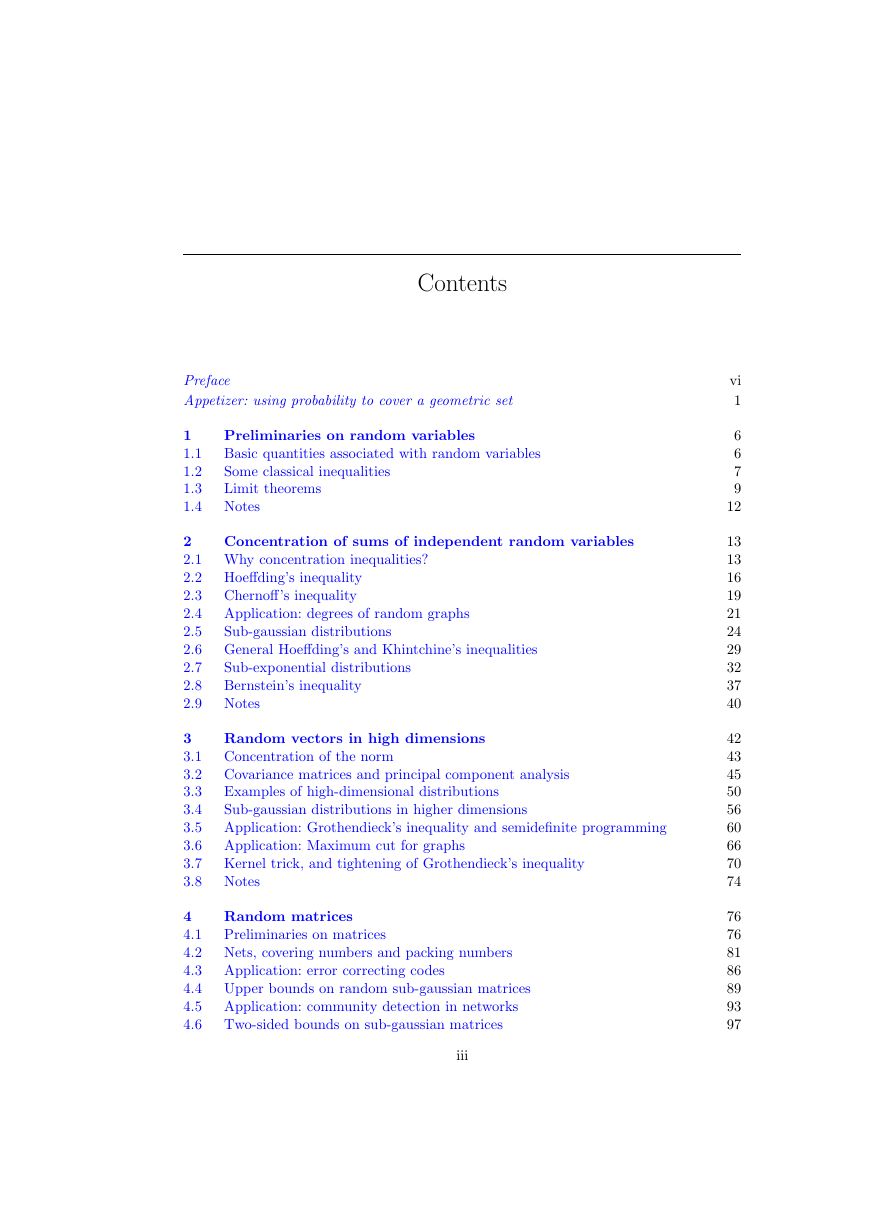
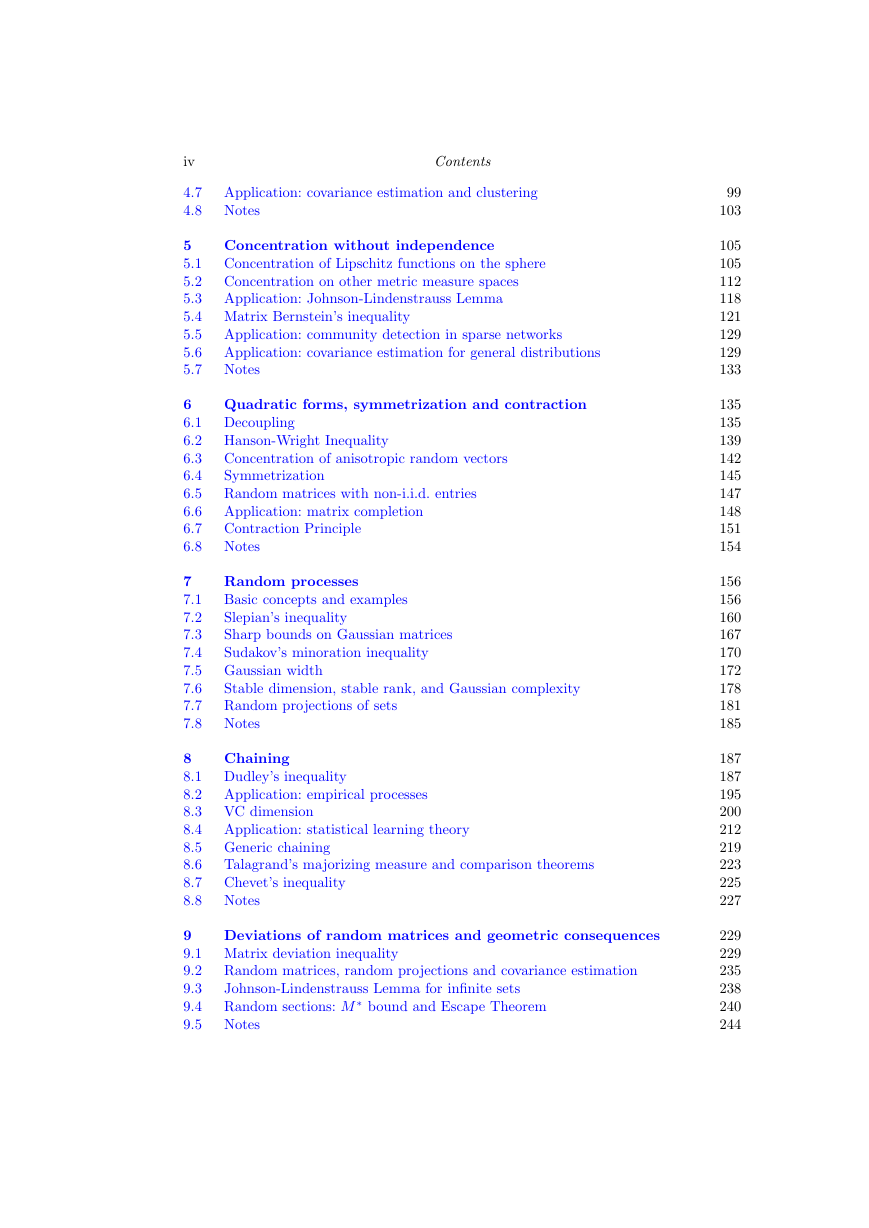
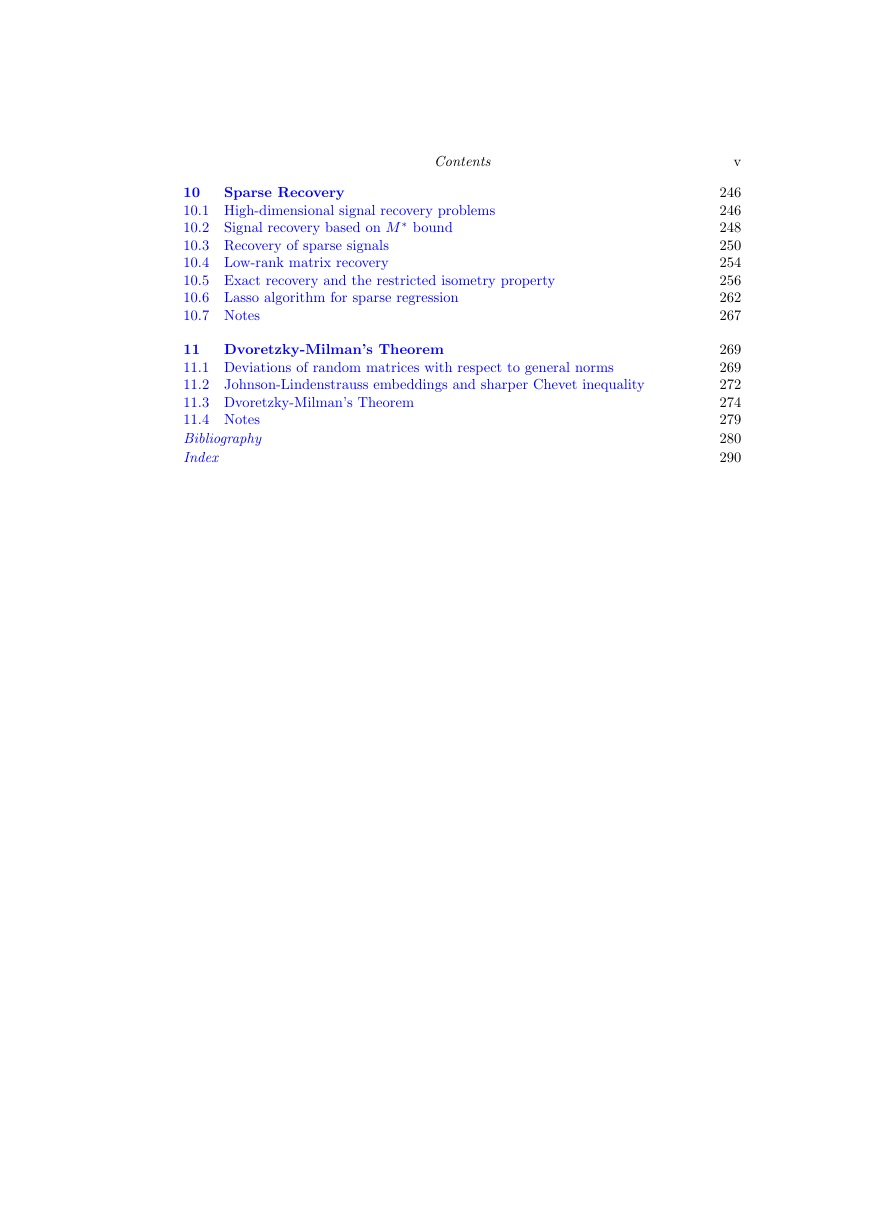
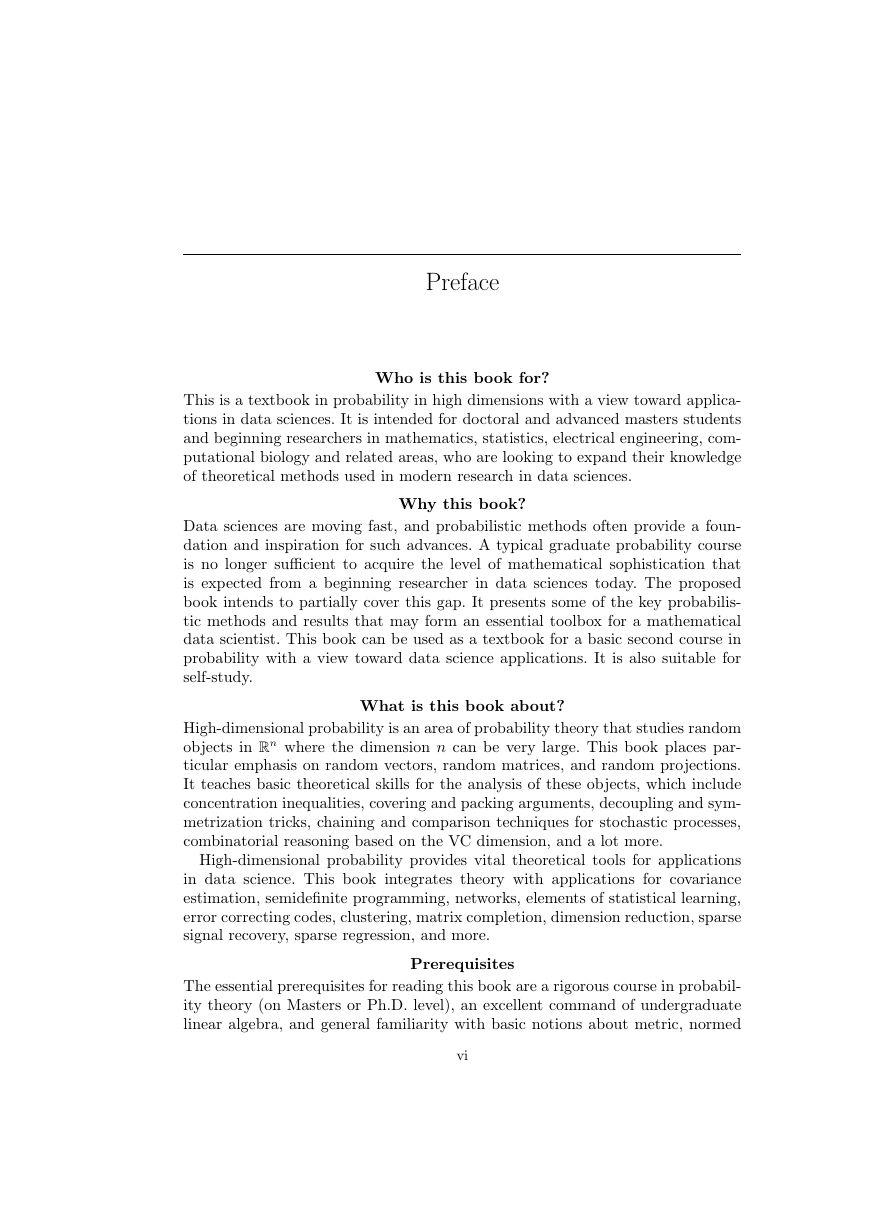
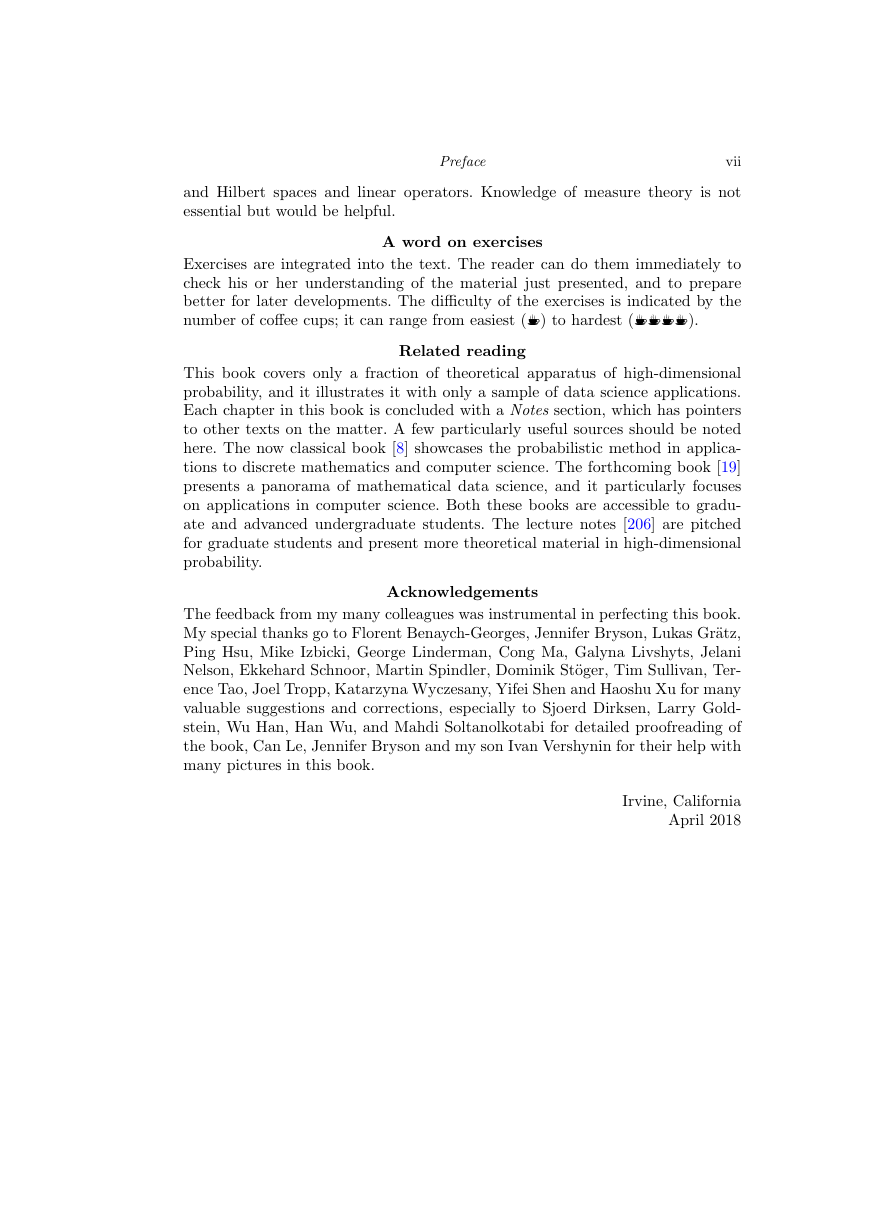









 2023年江西萍乡中考道德与法治真题及答案.doc
2023年江西萍乡中考道德与法治真题及答案.doc 2012年重庆南川中考生物真题及答案.doc
2012年重庆南川中考生物真题及答案.doc 2013年江西师范大学地理学综合及文艺理论基础考研真题.doc
2013年江西师范大学地理学综合及文艺理论基础考研真题.doc 2020年四川甘孜小升初语文真题及答案I卷.doc
2020年四川甘孜小升初语文真题及答案I卷.doc 2020年注册岩土工程师专业基础考试真题及答案.doc
2020年注册岩土工程师专业基础考试真题及答案.doc 2023-2024学年福建省厦门市九年级上学期数学月考试题及答案.doc
2023-2024学年福建省厦门市九年级上学期数学月考试题及答案.doc 2021-2022学年辽宁省沈阳市大东区九年级上学期语文期末试题及答案.doc
2021-2022学年辽宁省沈阳市大东区九年级上学期语文期末试题及答案.doc 2022-2023学年北京东城区初三第一学期物理期末试卷及答案.doc
2022-2023学年北京东城区初三第一学期物理期末试卷及答案.doc 2018上半年江西教师资格初中地理学科知识与教学能力真题及答案.doc
2018上半年江西教师资格初中地理学科知识与教学能力真题及答案.doc 2012年河北国家公务员申论考试真题及答案-省级.doc
2012年河北国家公务员申论考试真题及答案-省级.doc 2020-2021学年江苏省扬州市江都区邵樊片九年级上学期数学第一次质量检测试题及答案.doc
2020-2021学年江苏省扬州市江都区邵樊片九年级上学期数学第一次质量检测试题及答案.doc 2022下半年黑龙江教师资格证中学综合素质真题及答案.doc
2022下半年黑龙江教师资格证中学综合素质真题及答案.doc